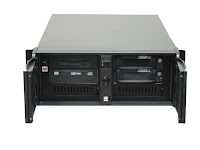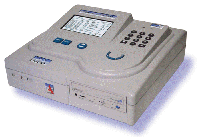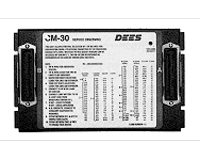Financial Contact Centers
Face the Realities of Complying with Dodd-Frank
Back in 2010, President Obama signed landmark legislation designed to protect the rights of the customer and usher in a new age of accountability for the financial services industry. Not surprisingly, the Dodd-Frank Wall Street Reform and Consumer Protection Act threw Wall Street and the financial industry through a loop. The new regulations, which emphasize greater transparency and strict adherence to organizational processes, are forcing financial organizations to make significant operational changes and implement a variety of enabling technologies.
Republican hopeful, Mitt Romney, promised to “repeal and replace”
Dodd-Frank upon his election. Now, with the recent re-election of President
Obama, any hopes the industry may have harbored for the departure of Dodd-Frank
have now been dashed. In an article in the November 2012 issue of the Wall
Street Journal, “Battle Plan Shifts on Dodd-Frank”, these dashed hopes are
anticipated to drive a new wave of lawsuits against the Securities and Exchange
Commission and the Commodity Futures Trading Commission as business groups
battle to reduce the financial ramifications and overall impact of the
legislation. However, although some small wins can be expected, for the most
part, the regulations will likely remain in place.
New Dodd-Frank Call
recording Requirements
Unfortunately, contact centers of all sizes and in multiple
industries that are involved in swap activities – including financial services,
manufacturing, oil and insurance – are struggling to maintain compliance with
Dodd-Frank. Among the legislation’s many demands, new call recording and record-keeping
requirements have been received with extreme anxiety and reluctance. In
addition to being required to react quickly and appropriately to changing processes,
financial institutions must also respond immediately to audits or complaints
and provide guaranteed, foolproof evidence retention. The deadline for
financial services companies to comply with Dodd-Frank call recording record-keeping requirements has been extended from
November, 2012 to March, 2013. Organizations that fail to comply may face stiff
penalties and fines.
In short, the legislation outlines the requirement to record all
oral communications relating to pre-execution swap trade information, including
communications that ultimately lead to a related cash or forward transaction.
Additionally, financial organizations are required to maintain all such records
in a manner that is searchable by transaction and counterparty. These call recordings must be maintained
in searchable format for a period of one year. Organizations are also required
to timestamp pre-execution and execution trade information using Coordinated
Universal Time and to maintain swap records at their principal place of
business or other designated principal office.
Despite the seemingly daunting nature of these very tough
regulations, new technologies and solutions are proving to be incredibly
effective in maintaining compliance and meeting the challenges of the
Dodd-Frank Act. Fortunately leading companies have developed analytics-driven call recording solutions
specifically to meet the needs of organizations faced with complex, evolving
compliance and liability issues. Advanced call recording solutions are able to record all channels of communication
used in today’s ever-growing mobile business environment – including
hard-wired, soft and mobile phones, trading turrets, hoot ‘n holler systems, email
and chat – to ensure the capture of every interaction between the contact
center or trading floor and customer. These solutions provide also flexibility
for storage and retention and also meet PCI-DSS compliance regulations by
masking and muting segments of interactions containing sensitive data.
Using Analytics to
Detect Non-Compliant Activities
Analytics can quickly identify and address Dodd- Frank compliance
issues. Analytics-enhanced call recording solutions have the ability to automatically tag pertinent
searchable data from trader applications and conversations – such as Customer
ID, Customer/ Portfolio Type, Order Amount, Order Type, Stock Symbol, Share
Price, disclosure and consent information, and more – to recordings for easy
access to important recorded interactions and are being used to meet Dodd-Frank
requirements for speedy search and detailed record-keeping. These solutions
offer a proactive alerting function, which detects and proactively notifies
management of non-compliant events within interactions. Detailed Audit Trail
reporting is achieved with interactive drill-through reports and heat maps,
which can easily identify who accessed any recording in the system and when it
was accessed for playback, export or any other critical event.
Closing Knowledge Gaps
with E-Learning and Coaching
While these remarkable technologies can resolve many of the
problems faced by financial services organizations in the wake of Dodd-Frank,
the human factor remains a huge issue. When striving to maintain compliance,
employees are under a great deal of pressure to perform at maximum capacity
within the tight constraints of various regulatory requirements. They’re trying
to cope while learning to use new applications and being bombarded with
constant updates on new processes and procedures. E-Learning and Coaching tools
have proven to be a huge advantage in the quest for speedy implementation of
new policies and the correction of non-compliant behaviors. If non-compliance
is being caused by gaps in employee knowledge or skills, personalized Coaching
will automatically be assigned to the trader and notifications and alerts can
be sent to their managers on the particular topic causing the issue.
As many compliance and
operations officers prepare to meet the stringent demands of Dodd-Frank
legislation, they can rest easier knowing that the latest call recording and workforce
optimization software innovations have been designed to help them more easily
overcome these challenges. Affordable and incredibly easy to implement and
adopt, these state-of-the-art solutions can be implemented quickly and easily,
providing some much needed peace of mind in a time of deep industry unrest and
trepidation.
Information provided by Call Recording Industry Professionals.





